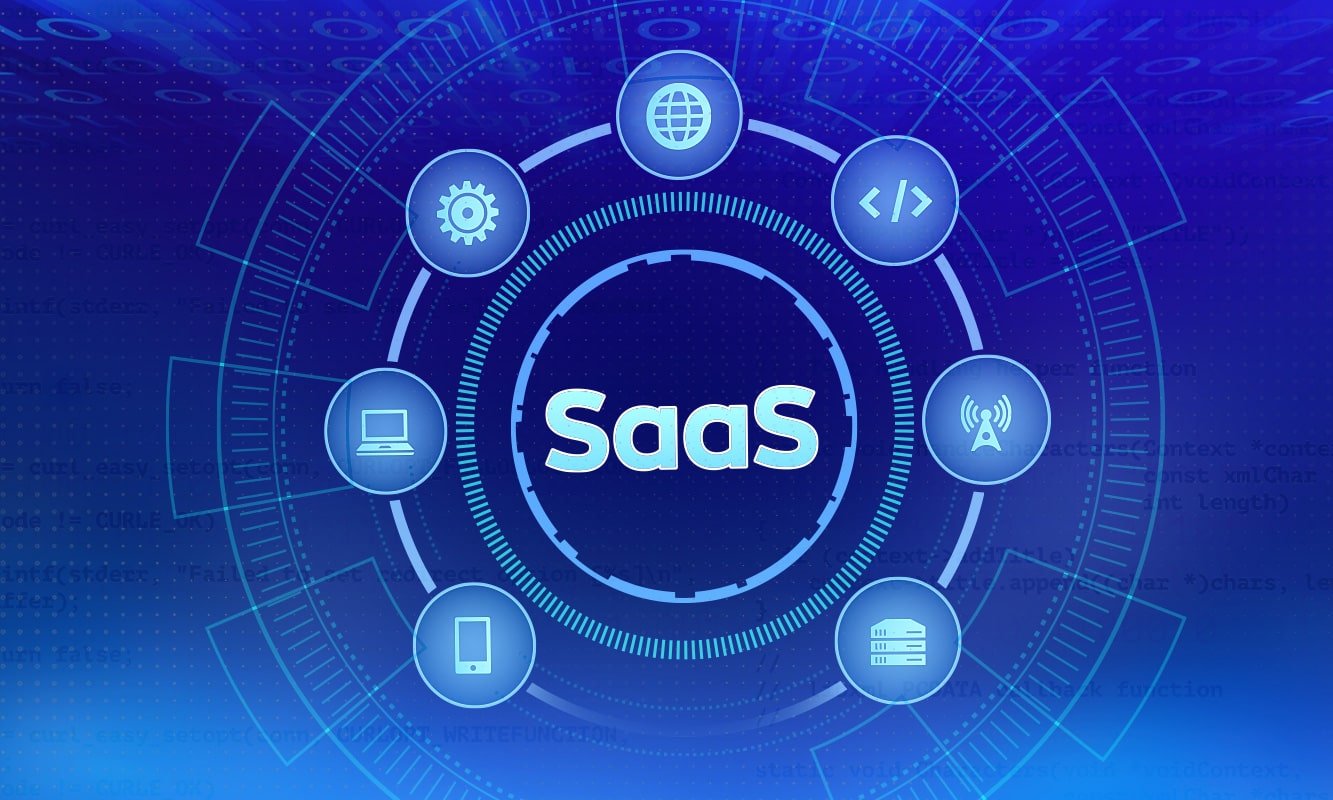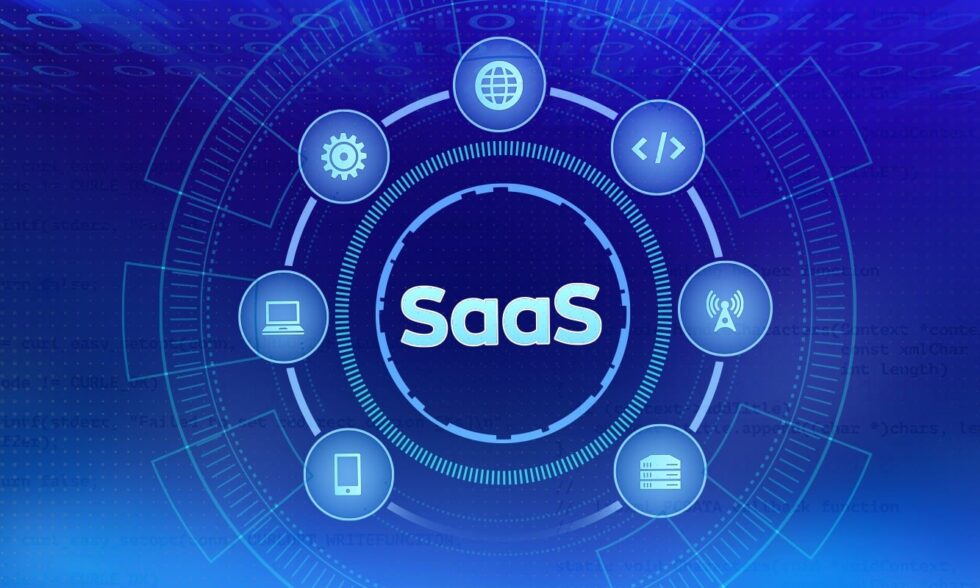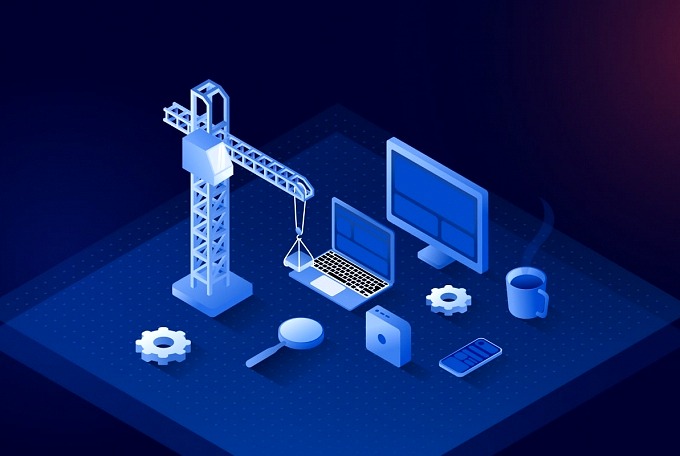Are you considering Software-as-a-Service (SaaS) in your business? SaaS has proven itself effective for thousands of companies worldwide and generates huge profits. Find out what SaaS is and how beneficial it is for users of applications, software providers and businesses.
What is SaaS?
Software-as-a-Service is a business model based on providing access to software via cloud computing. Users pay for access to an application rather than owning a physical product e.g. on a DVD.
Some examples of SaaS solutions include:
- Slack – software for asynchronous communication
- Gmail – web based email
- Miro – a platform facilitating remote team collaboration
- Google Analytics – website analytical system
- Google Docs – document editor, spreadsheet
- Infakt – an accounting system
Software is maintained and accessed in the cloud. Access to applications is mostly provided using a subscription or pay-per-use basis. In this model, the customer is a tenant, not an owner. This can be compared to renting a flat, where tenants pay for living there, yet they do not own the property.
[One interesting example
In certain respects, Facebook is SaaS. Unlike standard solutions, users pay with their data instead of money. For that reason, this portal keeps changing and improving its personal data protection policy.]
The SaaS model offers perfect conditions for creating and distributing cloud native software. Native cloud-based applications are considerably easier to develop. An effective IT project completion shortens the time-to-market for new digital products. Software owners spend less money on building a product, as they do not have to maintain any local infrastructure and pay just for the resources they use.
Find out more about cloud native software development in the article What is cloud native and why does your business need it?

The benefits of SaaS
Software as a Service is one of the most common models of providing access to cloud native software, and the value of this market is increasing every year. Why is SaaS so popular? Because it ensures a wealth of benefits for software owners (business), software developers (software houses) and end users (customers). Check the benefits of SaaS and find out where there is value in using this model in your business.
BENEFITS FOR USERS
- Flexible adaptation to user needs
SaaS is a perfect complement to every business. In the past, digital products used to cost a fortune and had to be paid for life, no matter whether you needed them or not. Today, the majority of digital products are available in SaaS, allowing you to use the functionalities your business needs. In addition, you pay for them only for as long as you need them.
You can flexibly adjust the functionalities, length of use, fees, performance, and the number of authorised users.
- The opportunity of using innovative technologies
With the growing popularity of SaaS, small and medium companies have received access to the solutions and technologies that were once the reserve of the big players. SaaS enables the testing and checking of software as trial or demo versions at low cost, and sometimes even free of charge.
- Faster error and bug fixing
A SaaS provider needs to make improvements just in one location – in the cloud. There is no necessity to visit each customer in person and make changes on their physical servers separately.
- Quick and cheap access to software
SaaS customers are instantly provided with ready-to-use software. It is often enough to just connect your payment card to check the system. You do not need to install or maintain software on local servers.
BENEFITS FOR SaaS PROVIDERS
- A lack of distribution costs
Providers do not bear any distribution costs. Your software is sold in the cloud and you do not have to install and implement the software on the users’ servers, which reduces costs and considerably accelerates new customer onboarding.
- Faster error fixing
Software management takes place in one location, in the cloud. You do not have to inform all of the customers about issues. Fixing is within the framework of cloud services, and every customer automatically gets the same efficient software.
- Easy access to the analytics
SaaS providers have direct access to logs, metrics and analyses of reports from all their customers. A better analysis of behaviours and most frequent activities of your partners can point to ways of consistent improvement in a SaaS product and quality of service.
- Better industrial property security
Keeping software and source code in one appropriately secured location in the cloud hinders stealing in-house developed technology. In the traditional model of selling digital products there are significantly more points of contact for cyber criminals with the code. Every server on which your software is installed is a potential target for a cyberattack. In these conditions a provider has no influence on the level of security. Centralising software in the cloud, within SaaS, can point to increasing the security of the code and application.
Find out more about cloud software cyber security here.
BENEFITS FOR BUSINESS
- Short time-to-market and efficient idea validation
Authors of SaaS can quickly prepare MVPs (Minimum Viable Products) and explore the market potential for their products. In real market conditions it is possible to test the software and the adopted payment model. In many cases, entrepreneurs make money on their product and expand the circle of loyal customers at this early stage, developing their software at the same time.
- A new group of potential customers
As SaaS enables shaping the scope of functionalities, length of use and price, smaller companies which constitute the largest sector of the EU economy (in the entire European Union they account for 99% of all the enterprises) receive access to cutting-edge technologies. Software manufacturers who use SaaS in their business model have gained a giant purchasing group. The small and medium enterprise sector is a huge group of potential customers who are eager to use innovative technologies, which is why owners of cloud native SaaS can earn more.
- Straightforward communication of SaaS benefits in the eyes of customers
Potential users of your software are mostly interested in high quality, cost optimisation, clear rules for application use, and an individual approach to their business. Marketing of cloud native SaaS is significantly more straightforward, if you can communicate the following benefits:
- Using our software will be cheaper and you know the cost in advance.
- You can prepare for growth and scale your business flexibly.
- You can easily predict the resources essential for achieving your goals.
- You have greater control over the budget and realisation of your assumptions.
- Low implementation costs
SaaS implementation is significantly cheaper. Most applications provide users with ready tutorials or FAQs. Users are accustomed to this method of learning to use new applications and to solve issues. As a software owner you do not have to organise individual training sessions for every new customer, and in this way you save on additional consultants.
- Data and application security
With SaaS you are responsible for ensuring an appropriate level of user security in your application. Cloud services and support from a reliable software provider take over the lion’s share of this responsibility.
Cloud providers guarantee security certificates and ready procedures, ensuring the highest standards of user data and application code security. In addition, you no longer need to secure each of the servers of your software users, as the cloud allows managing everything in one location.
Neglecting the issue of SaaS cyber security is connected with a variety of consequences that can lead to a business failure, particularly in the context of the new GDPR, which imposes strict regulations related to user personal data security on all companies in Europe. In this area it is worth trusting experienced software houses. Find out how Stepwise provides software data security [url: article about cyber security].
- Thorough data analytics
SaaS can have modules enabling tracking and analysing of the behaviours of application users. As an owner you can observe the system and user behaviours. Be careful – we recommend using these functions just for improving your products and services. Data profiling and manipulating purchasing decisions are activities on the fringes of the law and of ethics, and we all take personal responsibility for these.
What are the disadvantages of SaaS?
Perfect solutions do not exist and you should also bear this in mind in the case of digital Software as a Service products (services). So what disadvantages does SaaS have?
The fundamental flaw is that you need Internet access for any operations in the application. Of course, there are applications that also work offline, and they usually have limited functionalities.
The next disadvantage of SaaS is the number of typically human threats. There are a large number of cyberattacks on SaaS platforms, so code, data and application security is an issue that needs to be planned at the early stages of IT projects.
Processing user personal data online is always risky. The wider the access to the software, the greater the risk that someone finds gaps in the system and uses them illegally.
Particular attention should be paid to the security of applications and data. Optimum protection of software against cyberattacks does require thorough preparation.
SaaS is mostly used on a subscription or pay-per-use basis. This can be cost-efficient, but you should maintain thinking on how to adapt the rules of operation and prices to the customers. It is wrong to always use the 3 traditional types of subscriptions. Although benchmarks of payment models are valuable and allow expanding your business, imitating every solution that works at your competition is not good. Any activities should be based on thorough market research.
What are the differences between the “as a Service” models?
Cloud native SaaS is not the only “as a Service” solution. IaaS and PaaS (Infrastructure and Platform) models are also worth attention. While selecting a particular solution, you should always be guided by the individual needs of your business, and more importantly, by your customers’ needs. What are the differences between the “as a Service” models?
IaaS
Infrastructure as a service allows using the physical machines and devices of an IT infrastructure. As part of IaaS you get just a machine, and as a provider you need to take care of application and equipment security on your own. While cooperating with Stepwise, you receive support in software and system security management.
PaaS
Google App Engine is an example of PaaS. Unlike IaaS, a Platform as a Service does not launch an application directly into the operating system, but it is done through the platform that manages the code for you. The PaaS provider bears the responsibility for security and code rendering. One disadvantage of this solution is the limited number of languages that these platforms are able to process.
Is there value in investing in cloud native SaaS?
Is there value in investing in cloud native SaaS? As this is determined by a wide variety of factors, the answer should be “Of course, but in a specific situation only”.
Wisely designed cloud software, an appropriate level of application security, high code quality, UI/UX, and well-thought-out marketing of a digital product are the issues that mostly determine the success of SaaS. Stepwise always puts particular emphasis on the specific nature of a given branch, the unique business needs of customers, and the expectations of the end users.
Stepwise successes within cloud native area have resulted in us developing best project practices, allowing us to ensure high quality services and IT competencies adapted to each stage of software development, both in SaaS and other models. When you are in need of a reliable consultation, verification of your idea, and support for your company that go beyond the usual practices of a typical software house, contact our team.




